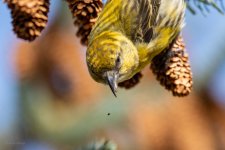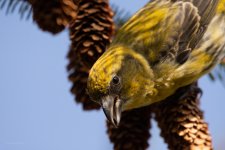KaterinBortle9
Active member

Looks good! May I know what scope is that?
hi horukuru, its a nikon monarch 60 eda.

Looks good! May I know what scope is that?





I disagree that "photographing an object is a more active process than observing it", an opinion that just indicates a low standard of observation, but I recognize the points about division of attention and even not needing to remember. Once at the end of a lovely autumn day hiking at the famous Maroon Bells I discovered that the film hadn't been advancing through my camera (only time in forty years that ever happened) and started recalling each shot I thought I'd taken, not that I hadn't appreciated those scenes at the time, just that a concomitant feeling of the value of remembering them had been lost in counting on photos to serve the purpose. It's a subtle thing, and if one is careful and has enough time both purposes can be served well.There is some interesting research on how photography changes the experience
As a totally off-topic aside, that only happened to me once too, after I shot a whole roll photographing the changing of the guard at Buckingham Palace.………. I discovered that the film hadn't been advancing through my camera (only time in forty years that ever happened)

That one sentence says it all for me.I really enjoy using my binoculars and just being outside and seeing whatever wildlife I have the good fortune to see brings me joy.

I'm still struggling to get past something here, a feeling that listening is only a clue, if I can't see the bird I still don't know it and it doesn't really count for me, so I wouldn't put it on my own personal list. (I do see how it still matters for public or scientific purposes like eBird, though I wish everyone would add a note "heard only" as only a few seem to.) Any advice?I find that about half overall (or more) of the birds on my checklists are heard only


I forgot to mention that, for both the sounds I think I know and those I don't, I try to practise by naming birds in the field by ear, and, when in doubt, I either run a recording through Merlin/BirdNET or wait to see the bird. If I'm wrong, I try to make a mental note of the confusion species, and how I would describe the qualities of what I'd just heard versus what it was. I'm on a steep learning curve with that and will be for the next few years if not longer.Hardly the paragon of virtue myself--I've made mistakes before--but I only count those that are obvious to me and then also those that are new for me provided that both apps identify them without doubt and don't flag any similar species (as less probable alternatives, for example), and I can convince myself by sound or sonogram that what I heard was that bird indeed. This approach is not perfect, and I've found myself retrospectively striking birds off my list after I'd found out more about potential confusion species. Of course, there are whole classes of birds that I don't tick on call--or song, in rarer cases--because I don't feel I can confidently seperate them, and certain calls of common species that have close analogues are in the no-no territory as well. Even if I'm not sure what made the sound, I can sometimes broadly ascribe to a group of confusion species, so--as you said--I treat it as a clue about what might pop up. So, unless the ID is obvious to me at the time, I add a note with a very short explanation of how I arrived at it for future reference (lifers--both seen and heard--usually have a bit longer notes, anyway). I also think other people make more concerted efforts to spot the songster/caller, while I often can't be bothered if I'm in no doubt, which probably skews the proportion towards heard-only's.
This is another and interesting issue. Personally I don't just concentrate on birds I can photograph as that's not how I do birding (we're all different) and I'm more likely to miss a photo of something close if I'm interested in identifying something I think is or might be unusual, further away. But I do understand this particular problem.I found that birding with only a camera meant that I was looking only at those birds that I felt were in range of my camera (and within my ability!) to take photos of. This often meant I was missing out watching other birds that were maybe too far away or too difficult to photograph. Of course the ideal situation is to take both camera and bins but lately I've been leaving the camera at home and taking only bins and a smartphone with Merlin on during my birding outings (or while walking the dog).
